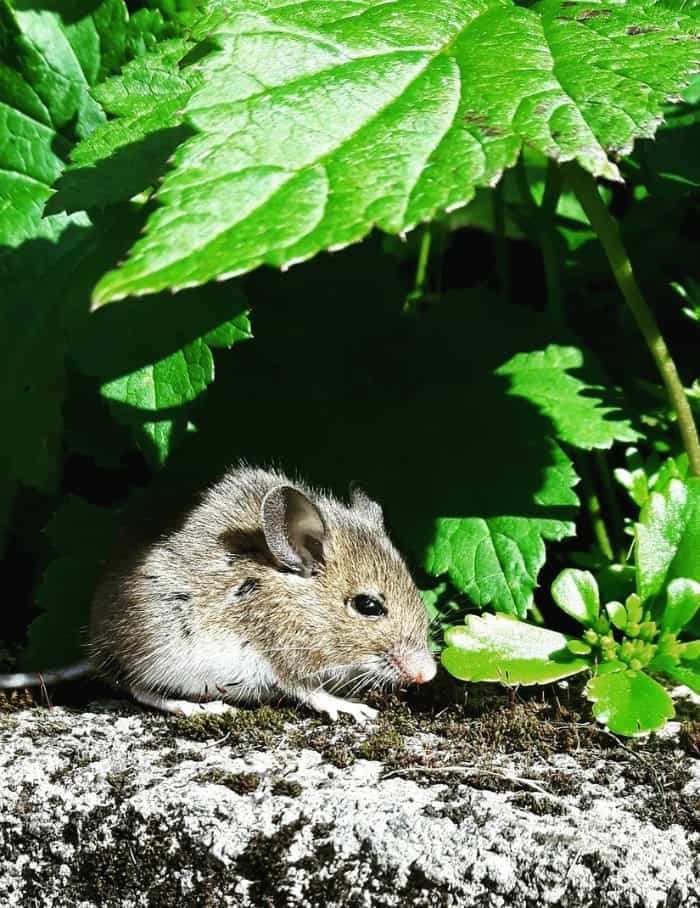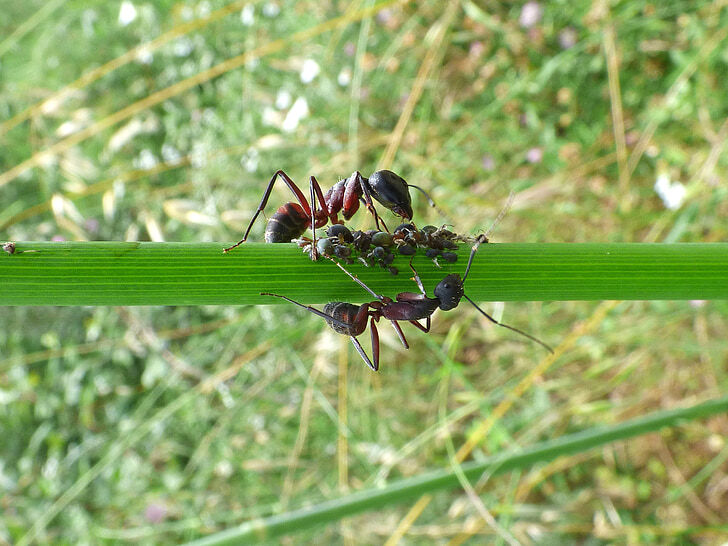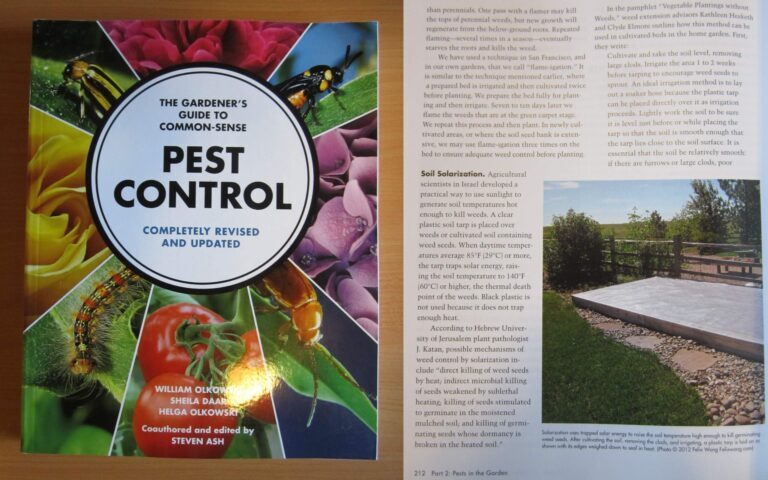The Role of Exclusion in Natural Pest Management
Introduction
Definition of exclusion in natural pest management
In the context of natural pest management, exclusion refers to the practice of preventing pests from entering or accessing a specific area or crop. This method relies on physical barriers or deterrents to keep pests away, rather than relying on chemical pesticides. By implementing exclusion techniques, such as installing mesh screens or fences, farmers and gardeners can effectively protect their crops from pest damage while minimizing the use of harmful chemicals. Exclusion in natural pest management is an environmentally friendly and sustainable approach that promotes biodiversity and reduces the risk of pesticide contamination in the ecosystem.
Importance of exclusion in pest control
Exclusion plays a crucial role in natural pest management by preventing pests from entering and infesting a particular area. It involves the use of physical barriers, such as nets, screens, and fences, to keep pests out. By implementing exclusion techniques, farmers and gardeners can significantly reduce the need for chemical pesticides and promote a more sustainable approach to pest control. Exclusion not only helps protect crops and plants from damage but also minimizes the risk of pests spreading diseases. Additionally, it can help maintain the natural balance of ecosystems by preventing the introduction of invasive species. Overall, the importance of exclusion in pest control cannot be overstated, as it provides an effective and environmentally friendly method of managing pests.
Overview of the article
In this article, titled ‘The Role of Exclusion in Natural Pest Management’, we explore the significance of exclusion as a method for managing pests in a natural and sustainable way. Exclusion involves preventing pests from entering or accessing certain areas, such as gardens, farms, or homes, by using physical barriers or techniques. By implementing exclusion strategies, we can reduce the reliance on chemical pesticides and promote a more environmentally friendly approach to pest management. This article provides an overview of the various exclusion methods and their effectiveness in controlling pests, highlighting the benefits of incorporating exclusion into integrated pest management practices.
Types of Exclusion Methods
Physical barriers
Physical barriers are an essential component of natural pest management. By creating physical barriers, we can prevent pests from accessing our crops or gardens, thus reducing the need for chemical pesticides. These barriers can take the form of fences, nets, or other structures that physically block pests’ entry. Additionally, physical barriers can also help in controlling the movement of pests within an area, limiting their spread and damage. By incorporating physical barriers into our pest management strategies, we can promote a more sustainable and environmentally friendly approach to pest control.
Cultural practices
Cultural practices play a crucial role in natural pest management. By implementing specific cultural practices, such as crop rotation, intercropping, and companion planting, farmers can effectively reduce pest populations without relying on chemical pesticides. These practices create a diverse and balanced ecosystem that promotes natural pest control mechanisms, such as the attraction of beneficial insects and the disruption of pest life cycles. Additionally, cultural practices encourage the development of healthy and resilient plants, which are better equipped to resist pest attacks. Overall, incorporating cultural practices into agricultural systems is not only environmentally friendly but also contributes to sustainable and long-term pest management strategies.
Biological controls
Biological controls play a crucial role in natural pest management. These controls involve the use of living organisms, such as predators, parasites, and pathogens, to control pest populations. By harnessing the power of nature, biological controls offer an environmentally friendly and sustainable approach to pest management. They can help reduce the reliance on chemical pesticides, which can have harmful effects on the environment and human health. Additionally, biological controls can be highly effective in targeting specific pests, minimizing the impact on beneficial insects and other non-target organisms. Overall, incorporating biological controls into pest management strategies is essential for promoting biodiversity and maintaining a healthy ecosystem.
Benefits of Exclusion in Natural Pest Management
Reduces the need for chemical pesticides
The role of exclusion in natural pest management is crucial as it reduces the need for chemical pesticides. By implementing exclusion techniques such as using physical barriers or traps, pests can be prevented from entering the target area, thus minimizing the reliance on harmful chemicals. This approach not only protects the environment but also promotes sustainable agriculture practices. Exclusion methods provide an effective and environmentally friendly alternative to chemical pesticides, ensuring the health and well-being of both humans and the ecosystem.
Preserves beneficial insects
Preserving beneficial insects is a crucial aspect of natural pest management. These insects play a vital role in maintaining the balance of ecosystems by preying on harmful pests. By creating habitats that support beneficial insects, such as providing food sources and shelter, we can encourage their presence and enhance their effectiveness as natural pest control agents. Additionally, preserving beneficial insects helps reduce the need for chemical pesticides, which can have detrimental effects on both the environment and human health. Therefore, it is essential to prioritize the preservation of beneficial insects as a key strategy in natural pest management.
Minimizes crop damage
One of the key benefits of natural pest management is its ability to minimize crop damage. By implementing exclusion techniques, such as using physical barriers or traps, farmers can prevent pests from accessing their crops. This reduces the likelihood of pests causing significant damage to the plants, leading to higher yields and better quality produce. Additionally, natural pest management methods often focus on promoting biodiversity and enhancing the resilience of the ecosystem, which further helps in minimizing crop damage. Overall, incorporating exclusion strategies in natural pest management plays a crucial role in protecting crops and ensuring sustainable agricultural practices.
Challenges and Limitations of Exclusion
Cost and labor requirements
Cost and labor requirements play a crucial role in the implementation of natural pest management strategies. While the use of chemical pesticides may initially seem more cost-effective, the long-term costs associated with their use, such as environmental damage and health risks, can be significant. In contrast, natural pest management methods often require less labor and can be more sustainable in the long run. By utilizing exclusion techniques, such as physical barriers or trap cropping, farmers can reduce the need for costly chemical treatments and instead focus on creating a balanced ecosystem that naturally controls pest populations. This not only helps to minimize the financial burden on farmers but also promotes healthier and more resilient agricultural systems.
Effectiveness against different pests
Natural pest management methods have been proven to be highly effective against a wide range of pests. Whether it is insects, rodents, or other nuisance animals, these methods have shown remarkable results in controlling and eliminating pest populations. One of the key advantages of natural pest management is its ability to target specific pests while minimizing harm to beneficial organisms and the environment. By using natural repellents, traps, and biological controls, such as predators and parasites, this approach offers a sustainable and eco-friendly solution to pest control. Furthermore, natural pest management methods have been found to be particularly effective in reducing pest resistance and preventing the development of pesticide-resistant strains. Overall, the effectiveness of natural pest management against different pests makes it a valuable tool in promoting sustainable and environmentally friendly pest control practices.
Integration with other pest management strategies
Integration with other pest management strategies is crucial in achieving effective natural pest management. While exclusion is an important component, it should be combined with other approaches such as biological control, cultural practices, and chemical interventions. By integrating these strategies, farmers and gardeners can create a comprehensive pest management plan that addresses different aspects of pest control. For example, biological control involves using natural enemies of pests, such as predators or parasites, to reduce their populations. Cultural practices, on the other hand, focus on modifying the environment to make it less favorable for pests to thrive. Lastly, chemical interventions can be used as a last resort when other methods are not sufficient. By combining exclusion with these strategies, natural pest management can be more efficient and sustainable.
Case Studies
Successful implementation of exclusion methods
Successful implementation of exclusion methods is crucial in natural pest management. By effectively preventing pests from entering a specific area, the reliance on chemical pesticides can be significantly reduced. Exclusion methods involve the use of physical barriers, such as nets, fences, or screens, to keep pests out. These barriers can be implemented in various agricultural or horticultural settings, including farms, gardens, or greenhouses. The success of exclusion methods relies on careful planning, regular maintenance, and proper installation of the barriers. Additionally, monitoring and early detection of potential entry points are essential to ensure the effectiveness of these methods. Overall, the successful implementation of exclusion methods plays a vital role in promoting sustainable and environmentally friendly pest management practices.
Impact on pest populations
Exclusion plays a crucial role in natural pest management by significantly impacting pest populations. By implementing exclusion techniques, such as physical barriers or traps, farmers and gardeners can prevent pests from accessing their crops or plants. This exclusionary approach disrupts the pest’s lifecycle and reduces their ability to reproduce and spread. Additionally, by excluding pests, the need for chemical pesticides is greatly reduced, promoting a more environmentally friendly approach to pest control. Overall, the use of exclusion in natural pest management has proven to be an effective strategy in minimizing pest populations and maintaining healthy ecosystems.
Economic benefits for farmers
Economic benefits for farmers play a crucial role in the implementation of natural pest management strategies. By adopting exclusion techniques, farmers can significantly reduce the reliance on chemical pesticides, which can be costly and harmful to the environment. Exclusion methods, such as using physical barriers or traps, help prevent pests from entering the crops and causing damage. This not only protects the yield but also minimizes the need for expensive pest control measures. Additionally, natural pest management practices can improve the overall health of the soil and promote long-term sustainability in agriculture. As a result, farmers can enjoy higher profits, reduced input costs, and a more environmentally friendly approach to pest control.
Conclusion
Summary of key points
The role of exclusion is a fundamental aspect of natural pest management. By implementing exclusion techniques, such as physical barriers and traps, pests can be prevented from entering and damaging crops. This approach is particularly effective in organic farming, where the use of chemical pesticides is limited. Exclusion not only helps in reducing pest populations but also minimizes the risk of pesticide residues on crops, making it a sustainable and environmentally friendly pest management strategy. In summary, the implementation of exclusion techniques plays a crucial role in natural pest management by providing a non-toxic and sustainable solution to pest control.
Future prospects of exclusion in pest management
The future prospects of exclusion in pest management are promising. As the demand for sustainable and eco-friendly pest control methods continues to rise, exclusion techniques have gained significant attention. By using physical barriers such as nets, screens, and fences, exclusion can effectively limit the entry of pests into agricultural fields and protected areas. This method not only reduces the reliance on chemical pesticides but also minimizes the risk of pesticide resistance and environmental contamination. Furthermore, exclusion can be integrated with other pest management strategies, such as biological control and cultural practices, to create a comprehensive and integrated approach. With advancements in technology and the development of innovative exclusion materials, the effectiveness and efficiency of exclusion in pest management are expected to improve further. Therefore, the future of exclusion in pest management looks promising and holds great potential for sustainable agriculture and natural pest control.
Call to action for further research and implementation
In conclusion, the role of exclusion in natural pest management cannot be underestimated. It has been proven to be a highly effective method in reducing pest populations and minimizing the use of harmful pesticides. However, there is still much more research and implementation needed to fully harness the potential of exclusion as a sustainable pest management strategy. Future studies should focus on optimizing exclusion techniques, exploring the use of new materials and technologies, and evaluating the long-term impacts on ecosystem health. Furthermore, it is crucial to promote the adoption of exclusion practices among farmers, gardeners, and pest management professionals to ensure widespread implementation. By investing in further research and encouraging the adoption of exclusion methods, we can pave the way for a more sustainable and environmentally-friendly approach to pest management.






